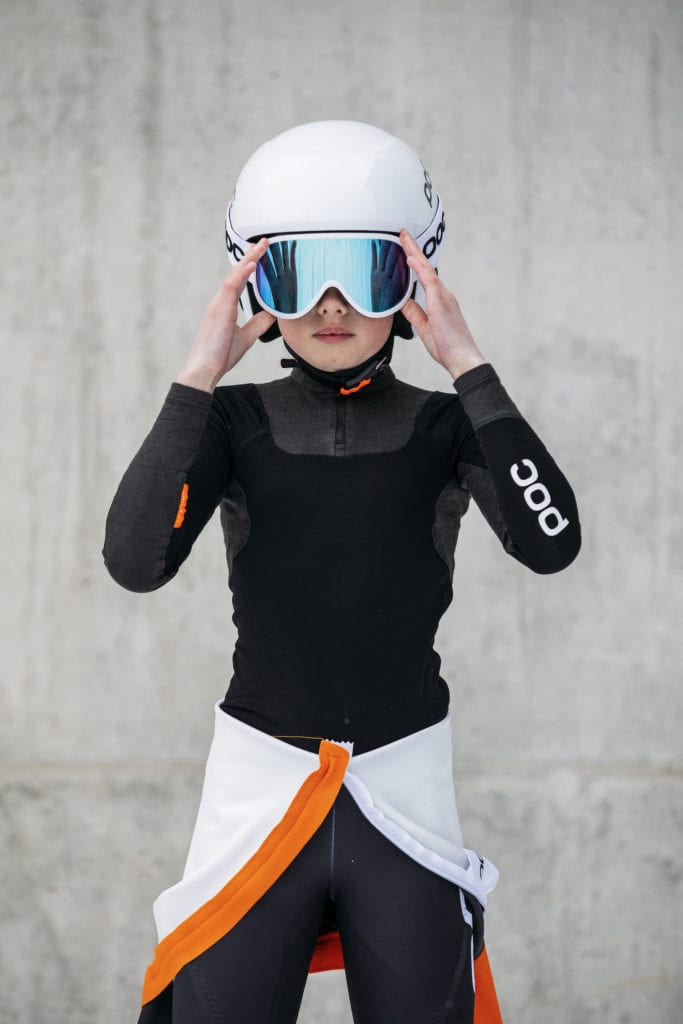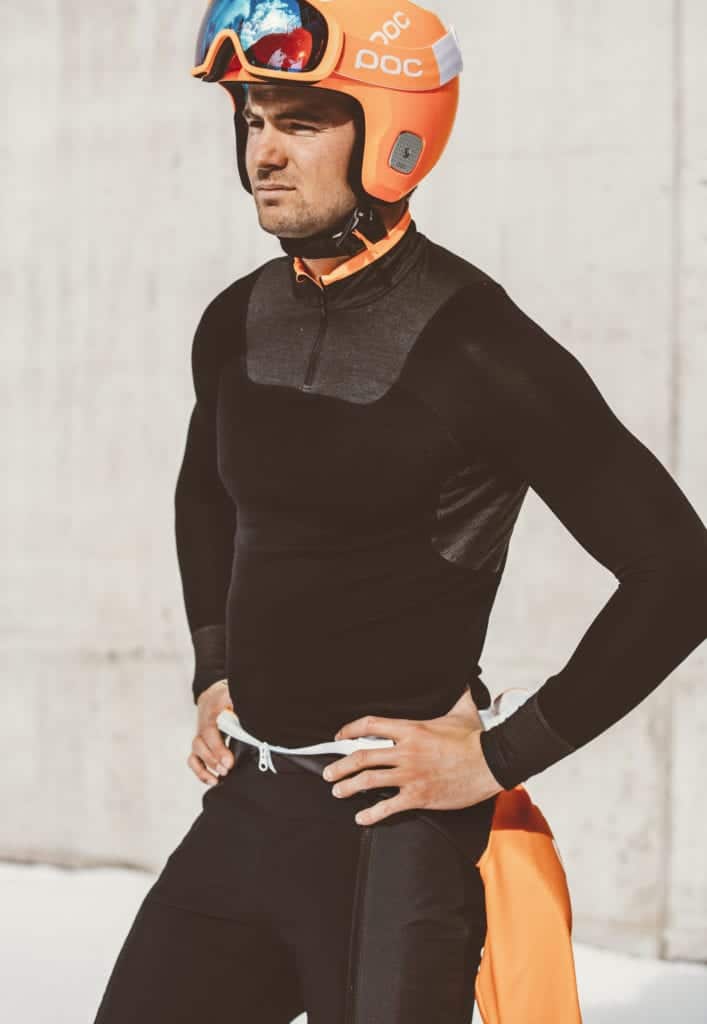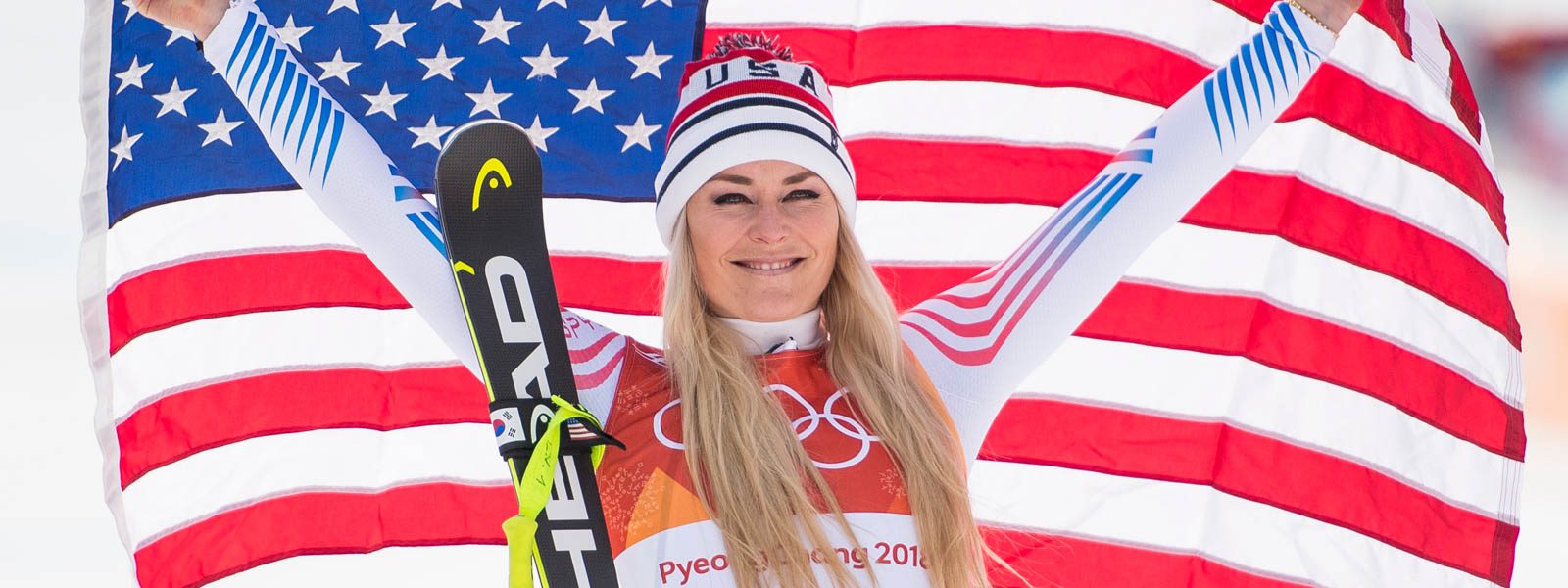Cutting edge innovation

A slalom race at Whiteface, N.Y. has forever changed U16 Jonathan Davis’ perspective on ski racing. In late March of 2018, the Green Mountain Valley School (GMVS) athlete suffered a horrifying injury after his ski edge pierced his leg and cut through his femoral artery.
Davis’ ski cut through his hamstring, lateral quad, IT band, nicked the sciatic nerve, and shaved a layer off his femur while cutting his major femoral artery. Luckily for Davis, he came to a sliding halt at the feet of a coach who was also a wilderness first responder and knew how to stop the bleed with the supplies around him, including the belt off a gatekeeper’s waist.
Davis had a relatively quick recovery after being discharged from the hospital in March. He was back playing lacrosse for GMVS in May. However, there were hesitations amongst himself and his family before heading to Chile for his first time back on snow that fall.
“I was nervous to get back skiing but what comforted me is I had cut-resistant layers on and my coaches got trained to stop bleeding,” said Davis. “Pretty much our entire school at GMVS is wearing cut-resistance base layers.”

The sport of ski racing has evolved. Race arenas are primarily artificial snow and ice to keep conditions consistent and fair. Junior athletes have machine-edge tuning capabilities and can recreate World Cup ski tunes from their garages. Not to mention the introduction to the shape ski which has increased speeds by up to 30% and set competition requirements for protection such as helmets.
But safety doesn’t stop there. As new approaches to speed come into the sport, so does the need to ensure that protection follows. This is the defining factor to POC’s existence, which all started out with one of the founders wanting to create more meaningful protection for his ski racing kids and from the ever increasing speeds and dangers.
POC is a leading innovator whose DNA lies in the evolution and development of new protection equipment. In 2016 POC released its first cut-resistant base layer made of Dyneema. Dyneema, most commonly known for being 15 times stronger than steel, was far from being used as a base layer under ski suits before fabric engineers at POC began development.
“When ski cuts were happening it was really life threatening,” said Ocsar Huss, head of product development at POC. “There were not a lot of accidents, but when it happened it was very severe.”
Huss and his team are constantly improving the level of protection in partnership with the POC lab. The POC lab is the company’s scientific forum of experts with specialties in neurology and spinal cord injuries, including medical doctors and traffic safety specialists for their cyclist products. At POC, product innovation ignites when these experts see trauma and can steer POC in the direction to enhance levels of protection that will mitigate injury.
“We know design, innovation, and product development,” said Huss. “When it comes to creating the maximum level of protection for the body, our medical experts steer the direction, for example, by providing the insight how to cover major arteries.”
In 2017, Oscar Darle, Fabric Engineer at POC, was brought onto the team to develop the newest material for cut-resistant base layers. This complex design process started with fabric development to create a safer, higher-performing and more comfortable garment for the skin. Whereas it usually takes POC a year-and-a-half to develop a new product, it took Darle and his team of fabric engineers two years to create just the material that would be used in the garment.
Using a single jersey-knit construction, added spandex, double layer Dyneema placed strategically over the major arteries, and working alongside designers and pattern makers to achieve wearability, the team created the second generation of cut-resistant base layers — one with a double layer used for competitive skiers and another single layer blended with Merino Wool for recreational skiers.
It wasn’t enough for the team to take the last generation of cut-resistant layers and make it slightly better. Instead, working with the evolved fabric and advanced manufactures, they developed a new product that has never existed before. Today, POC has eight product assortments in the Layer collection with an outstanding 60% increase in cut resistance from the last iteration in 2016.

Darle’s team continues to work with FIS and task groups to replicate accidents in a testing facility to evaluate how the garment will perform in a lifelike scenario. “We can’t just hope it’s good, we have to make sure it’s up to standard,” said Darle.
As far as increasing cut resistance by 60% from the previous generation, POC aims for the highest level of cut resistance rating in the future but recognizes this technology is not infallible.
“We know that it’s not possible to eliminate the risk of a cut completely, much like wearing a helmet can’t deal with every impact scenario, but we can use innovation and technology to ensure that if you are cut it will be much less severe, and that’s critical to an athlete” said Monica Lindstrom, Head of Apparel at POC. “We don’t necessarily want to be ahead of the adoption curve, we want to create the curve. We want to look at the other opportunities that exist.”

The layer was constructed to work as a matrix with an athlete’s race suit knowing that the layer would never be worn by itself. When paired with the race suit, athletes will have an additional layer of cut resistance in case of an injury.
POC’s design process has always started with protection. The team continues to evolve designs based on how to improve safety while always taking pride in the ascetic of the final product.
“We love sports. We love to ski and bike, but we hate it when those sports come with the risk of serious injuries,” said Huss. “If we could be part of a revolution or paradigm shift in the way people see equipment, then we have contributed to the journey.”
After making a full recovery from his injuries in 2018 Jonathan and his mother made it their mission to educate and train athletes and coaches across the country through the Stop The Bleed campaign. This program provides first responder training to stop severe bleeding, such as Jonathan’s, as well as supplies coaches bleed kits to act quickly on the slopes.
With an injury that could take just three minutes from the time the artery is cut to the time of death without stopping the bleed, Davis and his mother, Shelley, continue to provide “Stop the Bleed” training opportunities for U.S. coaches.
As far as what’s next for POC, Lindstrom reiterates POC’s mission to reduce the consequences of accidents and help save lives. As far as innovation, POC continues to aim for undiscovered opportunities.





















